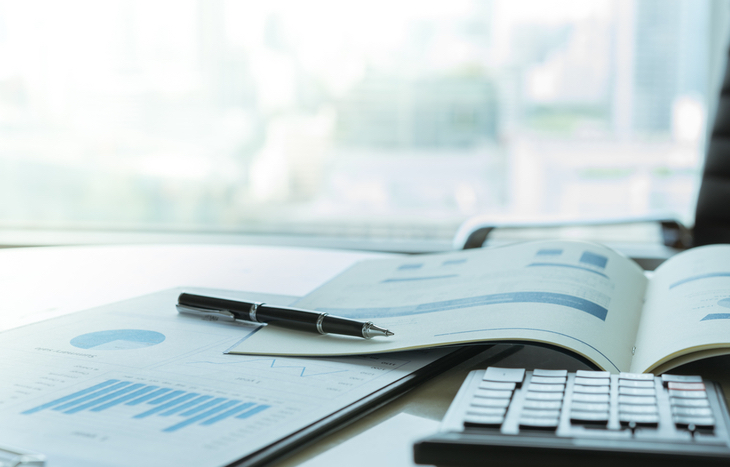What is an Annual Financial Report?
Access to a company’s financial accounting information is an extremely important factor in investigating its investment potential. Savvy investors want to know what’s on the balance sheet, what cash flows look like, how the company depreciates assets and more. To find this information, they need only look at the organization’s annual financial report.
The annual financial report—often simply called the annual report—is an audited report of a corporation or mutual fund’s condition and performance. It’s given to shareholders every year as a form of transparency. Investors and the public have full access to accounting records to better-understand the health, valuation and potential of the company.
Here’s a closer look at the annual financial report and why it behooves every investor to get familiar with reading one.

A Regulatory Requirement
Public companies and mutual funds must disclose an annual financial report to remain compliant with the Securities and Exchange Commission (SEC). The process for corporate financial reporting was standardized in the wake of the stock market crash of 1929, to bring transparency and accountability to publicly traded entities.
A company must submit a Form 10-K to the SEC each year after closing its books. This report acts as the company’s annual financial report, made public through the SEC’s EDGAR database of public-facing corporate documentation. In addition, companies must send their financial reports directly to all shareholders—typically delivered through brokers. Finally, many companies also choose to host annual reports on their websites, under investor relations sections.
Generally Accepted Accounting Principles (GAAP)
Per SEC rules, annual financial reports must conform to Generally Accepted Accounting Principles (GAAP). Specifically, this means all financial statements must follow recognized standards and best practices, and companies need to present information in a uniform manner to make it easy for investors to process the report. Within the report, auditors will certify GAAP criteria for all figures reported and notate any items that, for one reason or another, do not conform to these standards.
What’s in a Company’s Annual Financial Report?
A company’s annual financial report is a comprehensive compilation of its most critical financial documents, alongside commentary, context and insights for these reports. It’s often as much a story of the company’s year in review as it is a financial disclosure. These reports typically include the following:
- General company or fund information
- Operating and financial highlights
- Public-facing letter to shareholders
- Annotated documentation about company activities
- Management’s discussion and analysis (MD&A)
- Core financial statements (balance sheet, income statement, cash flow statement)
- Auditor’s report and determination
- Review of accounting policies
Every financial report will differ, but they’ll always contain the important GAAP information investors are looking for as they seek to evaluate the performance of a company. In addition, many companies will also host their annual meeting around the same time they release the annual financial report.
What’s in a Mutual Fund’s Annual Report?
Mutual funds have a similar responsibility to corporations when it comes to informing investors. Fund performance depends on the decision-making of its officers, and there’s an expectation that these individuals continue to produce market-beating results. The mutual fund’s annual report will show this—or give investors reason to question their investment. Overall, the report includes:
- Visual breakdown of the fund’s holdings and allocations
- Visual representation of the fund’s historical performance
- Audited financial statements for the fund’s top holdings
- Condensed financial statements
- Management’s commentary on fund performance
- Management information about directors and officers
- Disclosures of compensation paid to directors and officers
Mutual fund annual financial reports can also serve as benchmarking tools for investors to evaluate their own portfolio performance. These reports are typically much shorter and succinct than corporate reports. They provide basic, straightforward financial information. Moreover, they’re also available through the fund’s website, EDGAR and directly (typically through a broker).
How Investors Use the Annual Report
Annual financial reports provide a bevy of insight to current and prospective investors. Access to the balance sheet, income statement and cash flow statement give savvy investors quantifiable data about the company’s operations, which allows them to draw broad conclusions. For example, some of the surface-level insights investors can glean from the balance sheet include:
- A company’s responsibility to pay back its debts
- A company’s profitability and business model viability
- The company’s growth trajectory and past growth
- How much money the company reinvests in its growth
- The value of the company’s assets vs. its liabilities
- The company’s COGS and operational expenses
Combined with executive information and management statements, the annual financial report provides context for what the company has accomplished over the past year, as well as what its vision and goals are for the future. In general, it’s a powerful document for setting expectations and providing a basis for those expectations.
Always Check the Annual Financial Report
Whether you’re already a shareholder or considering a particular mutual fund to invest in, the first step in evaluating an organization is looking at its most recent annual financial report. Moreover, it provides complete information about the financial performance of the organization, as well as the context necessary to understand those figures. And more importantly, it’s a transparent disclosure of everything investors can and should know about the investment’s potential, so they can make an informed, confident decision.
To learn more about mutual funds and making smart investment decisions, sign up for the Liberty Through Wealth e-letter below. In fact, this daily newsletter is perfect for investors of all experience levels!
To find a company or mutual fund’s most recent financial report, search for its Form 10-k in EDGAR or visit the investor relations section of its website.





